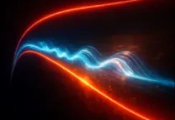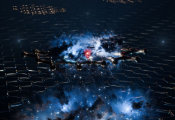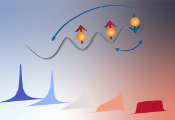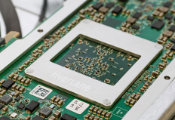Physicists Discover New Way to Make Strange Metal
By tinkering with a quantum material characterized by atoms arranged in the shape of a sheriff’s star, MIT physicists and colleagues have unexpectedly discovered a new way to make a state of matter known as a strange metal. Strange metals are of interest for their unusual physics and because they have been found in the high-temperature superconductors key to a variety of applications.
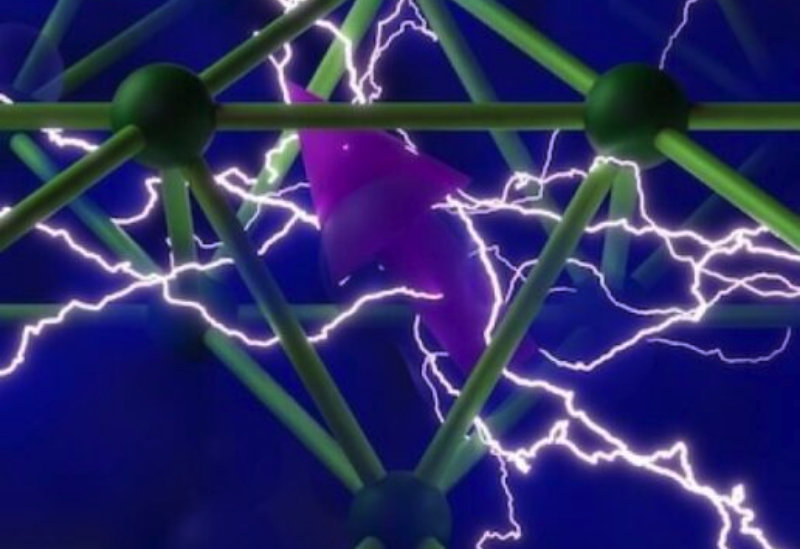
The work introduces a completely new way to create and study strange metals, whose electrons behave differently than those in a conventional metal like copper. “It is a potential new approach to designing these unusual materials,” says Joseph G. Checkelsky, lead principal investigator of the research and Associate Professor of Physics.
Linda Ye, MIT PhD ’21, is first author of a paper on the work published earlier this year in Nature Physics. “A new way of making strange metals will help us develop a unifying theory behind their behavior. That has been quite challenging to date, and could lead to a better understanding of other materials, including high-temperature superconductors,” says Ye, now an assistant professor at the California Institute of Technology.
The Nature Physics paper is accompanied by a News & Views article titled, “A strange way to get a strange metal.”
Kagome Metals
In 2018 Checkelsky and many of the same colleagues reported on a class of quantum materials known as a kagome metals. Members of the kagome metal family are composed of layers of atoms arranged in a lattice of repeating units similar to a Star of David or sheriff’s badge. The pattern is also common in Japanese culture, particularly as a basket-weaving motif.
“We were interested in the Kagome lattice because theory showed that it should host a variety of interesting features for electrons sitting on it,” says Linda Ye. Indeed, in their 2018 paper Ye, Checkelsky and colleagues including Riccardo Comin and Liang Fu (also of MIT physics) reported that their new Kagome metal produced Dirac fermions, nearly massless particles similar to the photons that carry light.
“In that case, the Dirac fermions were more or less expected from calculations,” says Ye. But the strange metals discovered in the current work were completely unexpected, and “that’s really bringing us to a new regime,” she says.
After their discovery of the Dirac fermions, the researchers wanted to see if they could find “an even more interesting feature in the Kagome lattice called a flat band,” Ye says. This is a phenomenon where the electrons essentially stand still, although each still spins around its own axis. Getting electrons to stand still allows them to really talk to each other. And that’s when all of the really interesting things in condensed-matter physics happen.
Looking for a Flat Band
More specifically, the team was looking for a flat band at the Fermi level, which can be thought of as the surface of the ocean. They found it, and began exploring the system’s electrical properties while subjected to high pressure and a magnetic field.
They discovered that the electrons in the flat band interact strongly with other electrons in the system. The result, says Ye, can again be compared to the ocean. Unperturbed electrons in the flat band can be thought of as a calm sea. Once they start interacting with others around them, the calm sea becomes a roiling storm with the electrons acting in two different ways. The result: a strange metal.
“We knew the flat band would result in something interesting, but we didn’t know exactly what it would give us. And what we found is a strange metal,” Ye says.
She notes that the work shows that the kagome lattice is a “very important design principle for new electronic states.” As a result, she now aims to extend the work to other lattices.
A Rewarding Project
The discovery reported in Nature Physics is the result of years of research. Ye herself began exploring kagome systems around 2015. “It’s been a long project,” she says. “It’s been pretty rewarding to build this step by step and find a lot of interesting things along the way.”
Ye and Checkelsky’s MIT coauthors are Shiang Fang, an MIT physics postdoc associate; Mingu Kang, MIT PhD ’23, now at Cornell University; Yonghun Lee, a visiting undergraduate student; Caolan John and Paul M. Neves, MIT graduate students in physics; S.Y. Frank Zhao, an MIT physics postdoctoral associate; and Riccardo Comin, the Class of 1947 Career Development Associate Professor of Physics.
Other authors are Josef Kaufmann of the Vienna University of Technology and the Leibniz Institute for Solid State and Materials Research; Jonathan Denlinger, Chris Jozwiak, Aaron Bostwick, and Eli Rotenberg, all of Lawrence Berkeley National Laboratory; Efthimios Kaxiras and David C. Bell of Harvard University; and Oleg Janson of the Leibniz Institute for Solid State and Materials Research.
This work was supported by the Gordon and Betty Moore Foundation, the National Science Foundation, the Army Research Office, the Air Force Office of Scientific Research, the Heising-Simons Physics Research Fellow Program, the Tsinghua Education Foundation, a Rutgers Center for Material Theory Distinguished Postdoctoral Fellowship, the Samsung Foundation of Culture, the Alfred P. Sloan Foundation, the Leibniz Association, and the Department of Energy.



